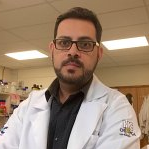Fungal Biology and Interactions
A special issue of Microorganisms (ISSN 2076-2607). This special issue belongs to the section "Environmental Microbiology".
Deadline for manuscript submissions: closed (30 June 2023) | Viewed by 12881
Special Issue Editors
Interests: cellular signaling of Trichoderma reesei; cellulase formation; trichoderma/fungi/plant pathogen interaction
Special Issues, Collections and Topics in MDPI journals
Interests: functional genomics; cellular signaling; biotechnology; secondary metabolism; filamentous fungi
Special Issues, Collections and Topics in MDPI journals
Special Issue Information
Dear Colleagues,
Interactions involving fungi are of fundamental importance to human life and in biotechnological processes. Thus, in this Special Issue on "Fungal Biology and Interactions", we aim to present new research and trends regarding fungi–fungi, fungi–plants, fungi–environment, and fungi–microbial community interactions. Articles to be submitted should address basic biology, molecular interactions, cell signaling, pathogen–host relationships, climate change, biofuels and biomaterials, and sustainable agriculture.
Reviews, original research, and communications are welcome.
Regards.
Dr. Roberto Nascimento Silva
Dr. Renato Graciano de Paula
Guest Editors
Manuscript Submission Information
Manuscripts should be submitted online at www.mdpi.com by registering and logging in to this website. Once you are registered, click here to go to the submission form. Manuscripts can be submitted until the deadline. All submissions that pass pre-check are peer-reviewed. Accepted papers will be published continuously in the journal (as soon as accepted) and will be listed together on the special issue website. Research articles, review articles as well as short communications are invited. For planned papers, a title and short abstract (about 100 words) can be sent to the Editorial Office for announcement on this website.
Submitted manuscripts should not have been published previously, nor be under consideration for publication elsewhere (except conference proceedings papers). All manuscripts are thoroughly refereed through a single-blind peer-review process. A guide for authors and other relevant information for submission of manuscripts is available on the Instructions for Authors page. Microorganisms is an international peer-reviewed open access monthly journal published by MDPI.
Please visit the Instructions for Authors page before submitting a manuscript. The Article Processing Charge (APC) for publication in this open access journal is 2700 CHF (Swiss Francs). Submitted papers should be well formatted and use good English. Authors may use MDPI's English editing service prior to publication or during author revisions.
Related Special Issue
- Fungal Biology and Interactions 2.0 in Microorganisms (1 article)







